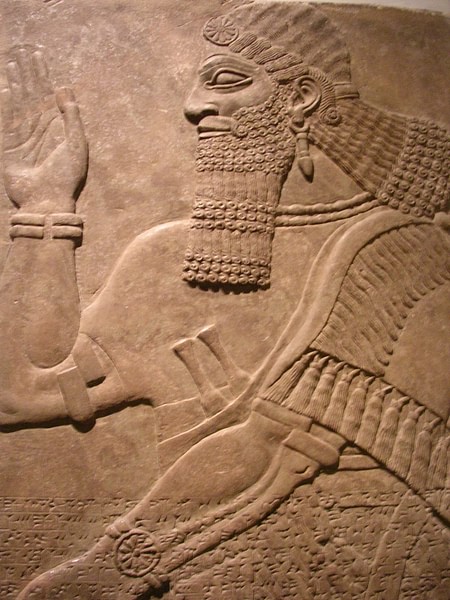It gets so confusing.
Seems some are bearded...and other clean shaven; wonder if that is the way to tell them apart?


It gets so confusing.
Seems some are bearded...and other clean shaven; wonder if that is the way to tell them apart?


Neo-Assyrians were Semitic, pre-Aramaeans/Babylonians.
Sumerians were, well, Sumerian with no proven contemporary or earlier/later relatives.
Sumerians were centuries, actually millennia earlier. The Sumerian civilization arose around 5000 BC. Around 2500 BC various Semitic people ie nomads came to live between the Sumerian cities. The two assimilated. By 1000 BC, ie after the bronze age collapse of 1440 BC, Sumerian language was relegated yo a liturgical language, like hebrew in 1 AD or Latin today.
The people were mixed.
The old Assyrian kingdom was before the collapse.
The new ie neo Assyrian kingdom arose in 900 BC
Neo-Sumerians? There were no Neo-Sumerians.
Perhaps you meant Neo-Babylonians, which marked the post-Assyrian revival of Babylon as a major capital. During the (so-called) Neo-Assyrian era, Babylon served as a secondary capital. Both groups used a Semitic language.
The term Neo-Assyrian has itself enjoyed a resurgence, but it is a meaningless term, really. Older survey works refer to Sargon the Great (founder of the Akkadian Empire), Sargon I (eventually dropped, as he turned out to be a modern invention) and Sargon II (now called Sargon, or sometimes Sargon II, now done to differentiate him from Sargon the Great). In the 1960s correspondence was found on a cuneiform tablet showing Hammurabi of Babylonia and King Shamshi-Adad I of Assyria to be contemporaries, and Sargon I just ceased to exist along with about three and a half centuries of phantom history.
As Cronos noted, the earlier Assyrian Empire is and has been referred to as the Akkadian Empire (after the capital city of that period) and overlapped the end of the Sumerian city-states. The Akkadians adopted Sumer’s cuneiform writing system and preserved some of its literature.